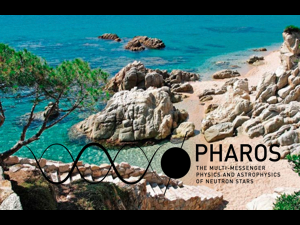Speaker
Prof.
Diego F. Torres
(ICREA & Institute of Space Sciences (ICE, CSIC))
Description
In this talk I introduce a model based on only 3 parameters and a global normalization scale that is able to describe the varied spectra of gamma-ray/X-ray pulsars known across 7 orders of magnitude in energy. This model provides at once an answer of what process is behind the emission spectra and how the spectral variety arises. It explains why we have detected sub-exponential cutoffs in gamma-rays, or why the spectra of some pulsars flattens at low energies. Using this model, I analyze how observations in gamma-rays can predict the detectability of pulsars in X-rays, providing a searching tool for new X-ray pulsars, and insights into what makes a pulsar shine in one or the other frequency. Based on these predictions, I present several tests, including the results of an analysis of archival Chandra and XMM X-ray observations of PSR J1747-2958 (the pulsar in the Mouse nebula), PSR J2021+3651 (the pulsar in the Dragonfly nebula), and PSR J1826-1256, that leads to detecting all three, with the agreement between the measured and predicted spectra found to be remarkable. Finally, I consider an analysis of the population of detected pulsars to see how the derived parameters correlate and the possible reasons behind this.
Primary author
Prof.
Diego F. Torres
(ICREA & Institute of Space Sciences (ICE, CSIC))

